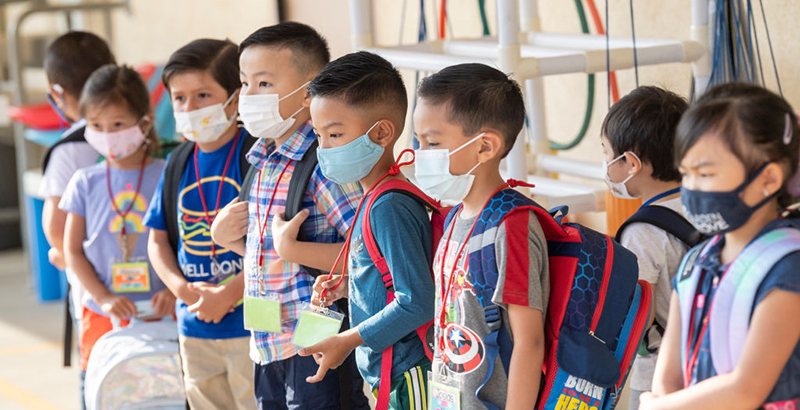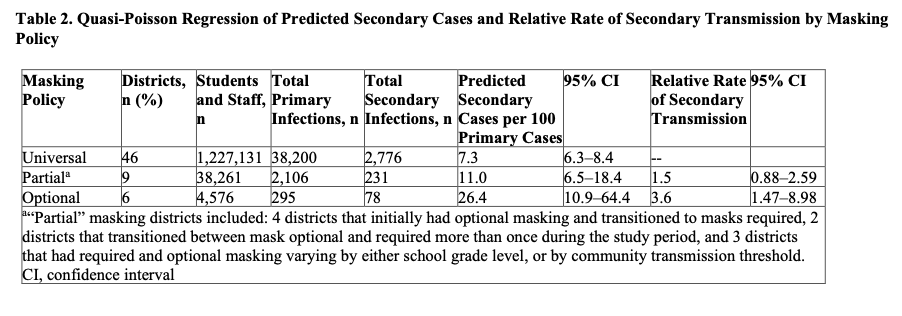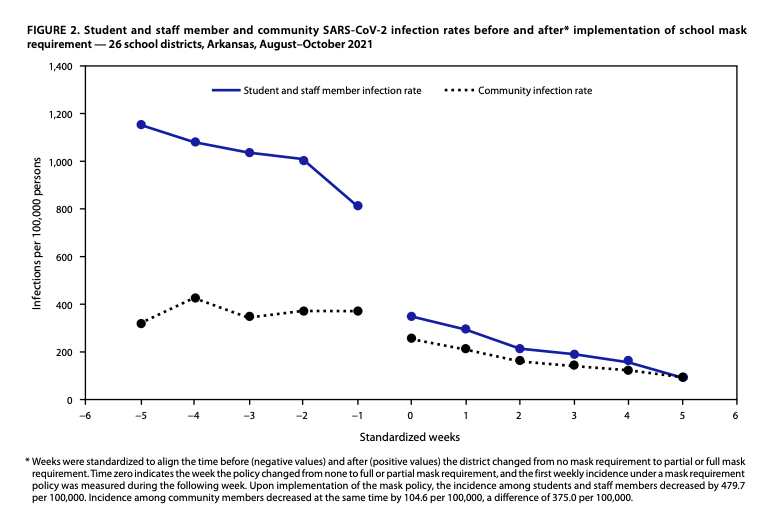Do Masks in School Work? As Mandates Fall, Pair of New Studies May Finally Put Debate To Rest

Get stories like these delivered straight to your inbox. Sign up for The 74 Newsletter
Schools that required students and staff to wear masks saw significantly less coronavirus spread than those that did not, a pair of brand-new studies reveal.
One report, which was reviewed and approved by the Centers for Disease Control and Prevention, tracked cases in 98 percent of school districts in Arkansas from August to October 2021. It found that COVID-19 incidence was 23 percent lower in fully masked districts compared to districts with no face-covering rule.
The other study, published in the journal Pediatrics Tuesday morning by Duke University’s ABC Science Collaborative, crunched data from 61 districts across nine states during the Delta and early Omicron waves, finding that masked schools had 72 percent less within-school spread than mask-optional campuses.
“The results of this study clearly show that universal masking reduces school transmission of COVID-19,” said Danny Benjamin, co-chair of the Collaborative, in a press release.
The findings come as many districts nationwide are moving away from mask mandates as the Omicron surge subsides. Only 31 percent of the largest 500 districts now require that students cover up, compared to 60 percent a month ago, according to data from Burbio, which has tracked school policy through the pandemic.
In late February, the Centers for Disease Control and Prevention changed its guidance, now allowing schools to go mask-optional in areas where transmission is moderate or low — a move that researchers generally agree is reasonable.
But mask policy remains a contested issue in major districts such as Chicago, where the teachers union has said it will file an unfair labor practice charge against Chicago Public Schools for its plan to lift its face-covering mandate March 14, and Los Angeles, where a safety agreement with the union may bar the nation’s second-largest district from unmasking until next school year. In New York City, even as the mandate dropped Monday, students, teachers and parents remain deeply divided on the issue.
Meanwhile, Florida lawmakers reached a deal this week to reward the 55 districts that followed Gov. Ron DeSantis’s directive by not requiring masks with $200 million while withholding any of that funding from the 12 districts that implemented a mandate.
Amid the controversy, the new studies may put to rest a more basic question that has hung over the issue of classroom masking since its inception: Do school mask mandates work in the first place?
In August, a New York Magazine article critiqued the existing body of evidence as not being able to prove that masks were the key factor in lower case rates among universally masked schools, because they didn’t have a direct comparison group. The difference could have instead been caused by factors such as distancing or increased ventilation, the piece argued.
But both the CDC and Duke studies compare fully-masked districts to unmasked districts, delivering statistically significant findings that bolster the research base for the effectiveness of K-12 masking.
Even if schools do decide to lift their face-covering rules during the current trough in cases, the results should give officials confidence that, should the virus worsen, masks remain an effective mitigation measure to stave off spread, said ABC Collaborative Co-Chair Kanecia Zimmerman.
“Especially in times with higher community infection rates and more transmissible variants, masking is a critical safety effort to support continued, in-person education,” said the Duke University pediatrician.
She and Benjamin’s analysis compared 46 universally masked, 9 partially masked and 6 mask-optional districts. In school systems where face coverings were required, it took over 13 positive student or staff cases to spur one instance of in-school transmission, on average. By comparison, it took less than four positive cases to trigger an instance of in-school spread in mask-optional districts. Partially masked districts fell in the middle with about nine cases, on average, spurring an in-school transmission.

The CDC study also examined 26 school systems that added a policy midway through the three-month observation period. In those instances, the masking rule corresponded with a drop in school COVID rates compared to community case rates.

A CDC science brief states that “transmission within school settings is typically lower than — or at least similar to — levels of community transmission, when prevention strategies are in place in schools.” The study’s head author told The 74 that low vaccination rates among students and moderate to substantial transmission rate at the time of the research may explain why case rates were higher in this sample of Arkansas school districts than in the surrounding community.
Get stories like these delivered straight to your inbox. Sign up for The 74 Newsletter


